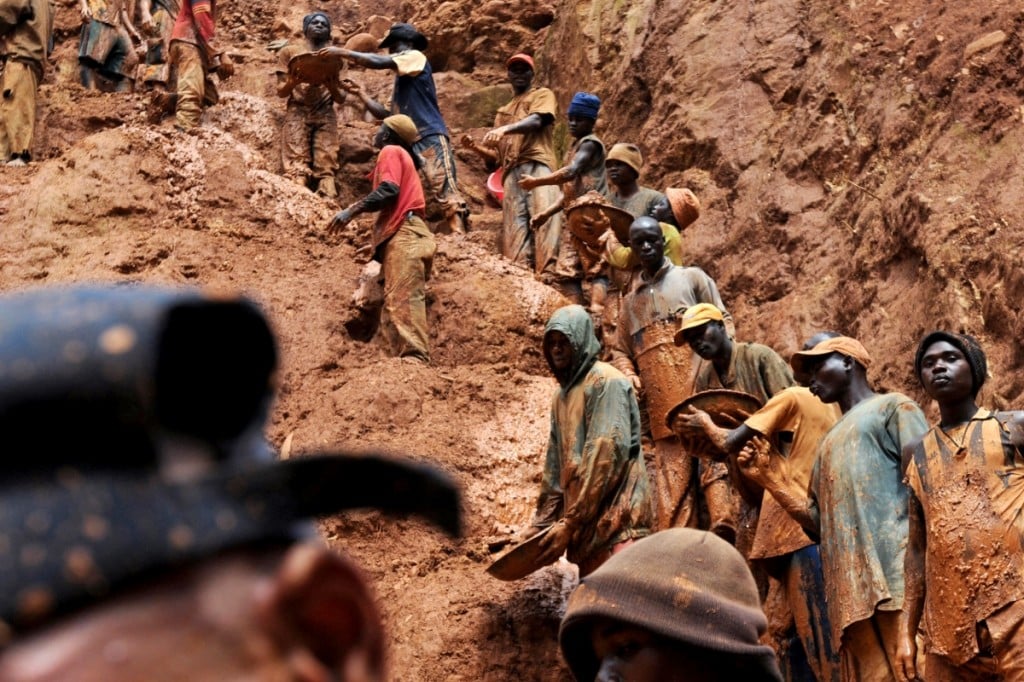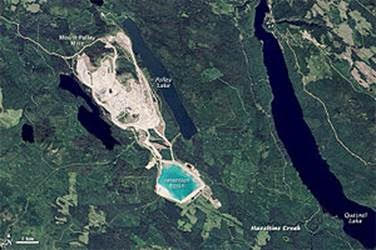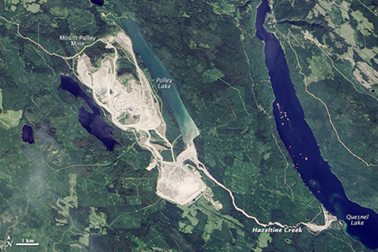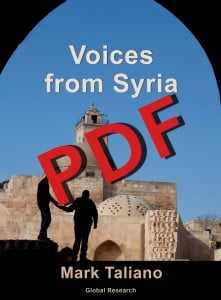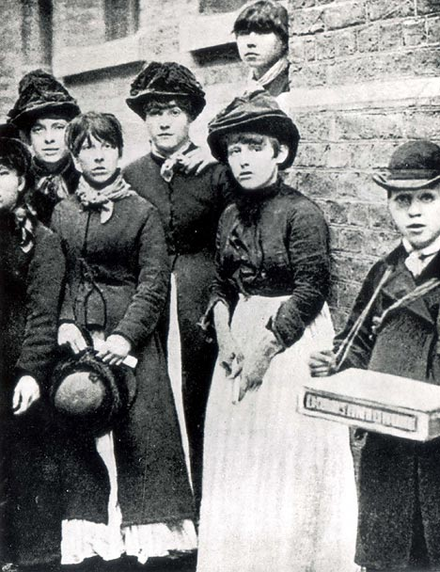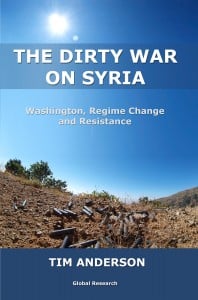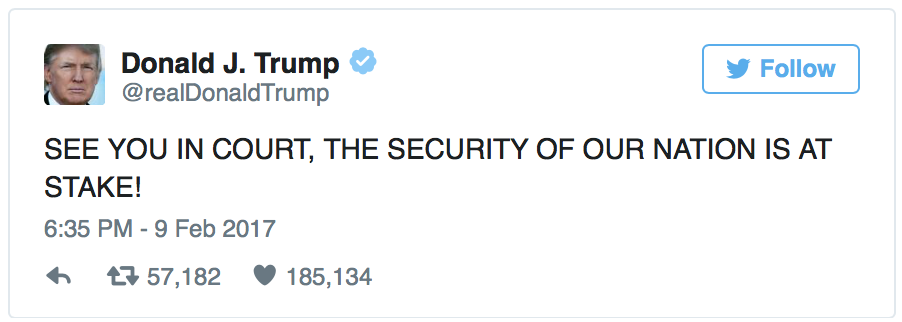Just as, at the dawning of a new geological era, the whole world collapses in a gigantic crack, new mountains rise up while gaping abysses open up, and new plains and seas take shape, so will the present structure of Europe be capsized in an immense cataclysm . . . The only chance for Germany to resist this pressure will be to seize the initiative and take control of the inevitable upheaval from which will come a new dawning of history. – Hermann Rauschning, Hitler Speaks / Voice of Destruction, 1939
We’ve arranged a society on science and technology in which nobody understands anything about science and technology, and this combustible mixture of ignorance and power sooner or later is going to blow up in our faces. I mean, who is running the science and technology in a democracy if the people don’t know anything about it? – Carl Sagan to Charlie Rose, May 27, 1996
The race to control space began in 1945 when Operation Paperclip [1] brought committed Nazi engineers, technicians, and scientists to the United States to engineer their wonders during the Hegelian ruse known to history as the Cold War. One example among the 10,000 Nazis who sought refuge in the U.S. was Arthur Rudolph, former colleague of Wernher von Braun, aerospace engineer and NASA director of the Marshall Space Flight Center.

Rudolph had been director of the Mittelwerk underground rocket factory nicknamed “Dante’s Inferno” where 52,000 prisoners turned out 6,000 V-2 rockets. From 1951 to 1961, Rudolph worked for Martin Marietta in Waterton, Colorado; in 1995, Martin Marietta merged with Lockheed Corporation to form Lockheed Martin. Initially in charge of R&D for the Pershing missile, Rudolph became an American citizen, headed the Saturn project for NASA, and received the Distinguished Service Award. In 1984, he renounced his U.S. citizenship and returned to Germany, having faithfully served the transfer of the Third Reich to the United States.
Thus it was through the military-industrial complex that the Trojan horse of amoral, cryptic Nazism entered the resource-rich United States. In short order, the National Security Act, formation of the CIA, and Cold War followed. Rockets, satellites, computers, MK-ULTRA brain engineering, and exotic propulsion craft thrust the 20th century into the 21st century of a new millennium.
The Space Age—Star Trek’s “final frontier”—began with the necessity of dominating airspace, the near space around the Earth, and weather. Military research into weather control was kept quiet throughout the Cold War while dire warnings about a “little ice age,” “greenhouse gases,” “desertification,” then “extreme weather” and “global warming” were released to keep the dollars flowing.
Now, it is the more neutral “climate change” accompanied by showcase international conferences packed with PhDs recommending expensive “solutions” under the rubric of geoengineering, the intentional human-directed manipulation of the Earth’s climatic systems (Stanford Environmental Law Journal) to make weather into a “force multiplier” [2] for the seven military operations discussed in my previous book Chemtrails, HAARP, and the Full Spectrum Dominance of Planet Earth: (1) Weather modification, environmental / geophysical modification, (3) electromagnetic manipulation, (4) military full spectrum dominance, (5) biological manipulation, (6) intelligence / surveillance, and (7) detection / obscuration of exotic propulsion technology. [3]
“Climate control”
The Federal Government has been involved for over 30 years in a number of aspects of weather modification, through activities of both the Congress and the executive branch. Since 1947, weather modification bills pertaining to research support, operations, policy studies, regulations, liabilities, activity reporting, establishment of panels and committees, and international concerns have been introduced in the Congress. There have been hearings on many of these proposed measures, and oversight hearings have also been conducted on pertinent ongoing programs. [4]
Infiltration and co-optation, compartmentalization, confidentiality agreements, backroom deals, threats, bribes, skewed research, packed peer review committees, embedded international media—one can only marvel at the legerdemain and deception it takes to steer international conferences, committees, publishing houses, news outlets, and university and elementary school curriculi so as to construct a vast global house of cards built on turning carbons, the building blocks of all of life, into the cause célèbre to explain away the fact that our atmosphere and weather are being modified by the military’s manipulation of the ionosphere. Besides, carbon taxes and emissions trading meant making more money off of the weaponized environment. It is quite the con, given that CO2 is not far above the minimum to sustain plant life [5] and nations should be increasing CO2 instead of being penalized for the CO2 they have. [6]
But then, the emperor wears no clothes. The first congressional report on geoengineering in the U.S. House of Representatives did not appear until October 2010 just before the moratorium against geoengineering issued by the 10th Conference of Parties to the Convention on Biological Diversity (COP10) in Nagoya, Japan was about to appear—a moratorium the U.S. was not planning to ratify. [7] Were the delegates from 193 nations aware that geoengineering had been going on in the U.S. and other NATO nations for well over a decade? Four months after the Nagoya moratorium, a geoengineered earthquake struck Japan.
Since the moratorium, embedded media have ramped up weather confusion in the public mind, blaming cars and industrial pollutants while assiduously ignoring the greatest polluters and propagandists of all: the over-inflated American military and the military-industrial-intelligence complex that runs it. In 2013, the Fifth Assessment Report of the Intergovernmental Panel on Climate Change (IPCC) indicated that solar radiation management (SRM) was already underway: “If SRM were terminated for any reason, there is high confidence that global surface temperatures would rise very rapidly to values consistent with the greenhouse gas forcing.” [8]
Greenhouse gas forcing is the least of our worries. What about the rogue military transforming our atmosphere for its own full spectrum dominance agendas?
Now and then, scientists like CERN particle physicist Jasper Kirby [9] and NASA Goddard Space Flight Center heliophysicist Douglas E. Rowland—“There’s different kinds of chemtrails as you probably know” [10]—leak a tantalizing tidbit about what is really going on, but it is tacitly ignored by mainstream media. An Italian senator calls for declassification of chemtrail documents, [11] a Cyprus agriculture and environment minister pledges to look into chemtrails [12]—and then, nothing.
Over and over again, government agencies near the hub of the “climate change” thrust (NASA, NOAA, EPA, etc.) are caught lying, but embedded media roll on. NASA proclaimed July 2012 the hottest month on record and NOAA’s National Climatic Data Center agreed: the July 2012 temperature average of 77.6ºF was 3.3ºF above the 20th century average and 0.2ºF above the previously warmest July of 1936 (during the Dust Bowl years). However, when meteorologist Anthony Watts checked NOAA data, he found that July 1936 had been reinstated as the hottest month on record. “You can’t get any clearer proof of NOAA adjusting past temperatures,” Watts wrote.
“This isn’t just some issue with gridding, or anomalies, or method, it is about NOAA not being able to present historical climate information of the United States accurately … This is not acceptable. It is not being honest with the public. It is not scientific. It violates the Data Quality Act.” [13]
David L. Lewis, PhD, a former microbiologist for the EPA’s Office of Research & Development, wrote in Science For Sale: How the Government Uses Powerful Corporations and Leading Universities to Support Government Policies, Silence Top Scientists, Jeopardize Our Health, and Protect Corporate Profits (Skyhorse Publishing, 2014) that EPA leadership consistently “mishandles science.” One incident occurred in 2003, when former Acting Assistant Administrator Henry L. Longest II made midlevel EPA managers read management consultant Margaret Wheatley’s Turning to One Another, urging environmentalists “to abandon Western science in favor of ‘New Science’ … the ‘space of not knowing’ and the ‘abyss.’ While passing through the abyss, new scientists shed their religious beliefs and sexual inhibitions, then turn to one another.” [14] Managerial candidates then had to fill out a confidential questionnaire about their promiscuity, religion, morality, and willingness to keep secrets. (What exactly was the EPA up to in the Bush II years?)
Add murder to propaganda, manipulation of international convocations, requiring sexual histories to forge bonds of secrecy, and blackmailing nations with geoengineered weather threats. U.S. Representative Dennis Kucinich (Ohio) fought hard for HR2977, the 2001 Space Preservation Act that over the next few years was stalled in committee after committee before its final death. On December 19, 2007, Kucinich’s 52-year-old younger brother was found dead; the following year on November 12, his 48-year-old sister died of acute respiratory distress syndrome. Coincidence, or payback?
On August 9, 2010, U.S. Senator Ted Stevens (Alaska) was investigating HAARP (see image right) at the request of Alaskan bush pilot Theron “Terry” Smith when their aircraft crashed, killing Stevens and Smith but not NASA administrator Sean O’Keefe, who was also onboard. Coupled with the fact that Smith’s son-in-law had been killed just days before in a C-17 crash at Elmendorf Air Force Base, “accident” or “coincidence” seems highly unlikely. The National Transportation Safety Board (NTSB) blamed the crash on the “pilot’s temporary unresponsiveness for reasons that could not be established.” [15]

Strange purges are underway. Canada has dismissed 2,000 scientists and hundreds of programs that monitored smoke stack emissions, food inspections, oil spills, water quality, climate change, etc. while closing seven of the eleven Fisheries and Oceans libraries:
… a document classified as “secret” that was obtained by Postmedia News mentioned “culling of materials” as a main activity in the reduction of libraries … reports have emerged of books being strewn across floors and even piled into dumpsters. [16]
Thus after decades of subterfuge, manipulation, and one extreme weather “experiment” after another in full view of nations whose citizens no longer believed in their own perceptions but instead sought media weather interpretations—as I write, Hurricanes Matthew and tropical storm Nicole are making profits for disaster capitalists along the Florida-Georgia-Carolinas Atlantic coast—came the globalist move to subject nations to the will of the U.S.-controlled United Nations, now that a dependable weather weapon was at last at hand.
A UN power shift
The participation of the U.S. and China is significant, as the two account for more than 40 percent of global greenhouse gas emissions. The agreement goes into force once 55 countries accounting for at least 55 percent of global emissions officially sign … Parties to the agreement will still have to go through the process of joining the agreement, which for most will require processes of approval in their home countries … [17]
On Earth Day 2016, the United Nations Framework Convention on Climate Change climate agreement was signed. It had been hammered out over the course of multiple conferences culminating in the COP21 in Paris November 30-December 11, 2015. The 2011 UN Climate Change Conference (COP17) in Durban, South Africa had attempted to include an International Tribunal of Climate Justice provision, [18] but by COP21, it had disappeared.
It was all quite the show. Climate mouthpieces were carefully chosen—the IPCC, geoengineers David Keith and Ken Caldeira, prestigious universities, embedded NGOs, government agencies, the World Bank and IMF, and of course the usual Wall Street-London deep pockets. Scriptwriters worked overtime on the fate of the Earth as cameras panned in on lightning flashes, rolling storms, deluges and droughts, crying babies, hospital emergency rooms filled to overflowing … The UN was to be tasked with vast new tax and regulatory powers in the name of keeping global warming below 2°C.
A quieter UN meeting had taken place in New York City two months before COP21: the Sustainable Development Summit concentrating on UN Agenda 2030 (Agenda 21 by a new name) that would coordinate with the carbons scam to turn nationhood into a mere address:
To cheers, applause and probably a tinge of relief, the 17 global goals that will provide the blueprint for the world’s development over the next 15 years were ratified by UN member states in New York on Friday. After speeches from Pope Francis and the Nobel laureate Malala Yousafzai, and songs from Shakira and Angelique Kidjo, the ambitious agenda – which aims to tackle poverty, climate change and inequality for all people in all countries – was signed off by 193 countries at the start of a three-day UN summit on sustainable development … The global goals summit continues until Sunday, after when all eyes will be on the UN climate talks in November. Asked if the goals will be scuppered without a strong deal in Paris [COP21], Mogens Lykketoft, the president of the UN general assembly, was hesitant, saying leaders were making more commitments than they were in previous COP meetings. ‘From what we know and hope for, we will be approaching a better deal.’ [19]
Weather warfare technology was the teeth “sustainable development” Agenda 2030 had been waiting for (and surely why developing nations had valiantly attempted to include an International Tribunal of Climate Justice). Immediately after the two conferences, the Dutch Defence Joint Meteorological Group (JMG) took the lead “in providing weather forecasts for every exercise or deployment of [NATO’s] Very High Readiness Joint Task Force (VJTF).” [20] And if you think the VJTF is only “forecasting” weather …
 To be fair, some academics do ponder the naked emperor. How exactly is CO2 to be removed from the atmosphere “using an infrastructure we don’t have and with technology that won’t work on the scale we need, and finally to store it in places we can’t find” [21]? Others recognize that the carbon solution is a ploy for raking in disaster capitalist cash: $90 trillion in energy infrastructure investments, $1 trillion green bond market, multi-trillion dollar carbon trading market, $391 billion climate
To be fair, some academics do ponder the naked emperor. How exactly is CO2 to be removed from the atmosphere “using an infrastructure we don’t have and with technology that won’t work on the scale we need, and finally to store it in places we can’t find” [21]? Others recognize that the carbon solution is a ploy for raking in disaster capitalist cash: $90 trillion in energy infrastructure investments, $1 trillion green bond market, multi-trillion dollar carbon trading market, $391 billion climate
finance industry. [22] The UN Green Climate Fund alone will clear $100 billion per year, purportedly to support concrete carbons mitigation in developing countries. Should we take bets on if the money will ever make it to the developing countries after being filtered through multilateral and private banks like World Bank and Deutsche Bank? After all, the naked emperor is not known for keeping his promises.
Traditional bureaucratic foundations like Ford, Rockefeller and Carnegie were said to be giving way to “philanthrocapitalism,” a muscular new approach to charity in which the presumed entrepreneurial skills of billionaires would be applied to the world’s most pressing challenges … [23]
Too late, the public is awakening to the dismal fact that its institutions, agencies, universities, laboratories, and courts obey the very powers that have milked public assets dry. Worker and food safety, gone. Bill of Rights, gone. Environmental protections, gone. Soon, the Trans-Pacific Partnership (TPP) and Transatlantic Trade and Investment Partnership (TTIP) or facsimiles thereof will lock in corporate feudalism under an oligarchic world rule. Billionaire members of the Good Club [24] are establishing “brain institutes” to support the Brain Initiative and its neuroscientists in service to a Transhumanist future. [25]
“Science is broken”
For two decades, independent scientists and the science-minded have been attempting to sound the alarm regarding what is going on in our skies and in low-earth orbit while university labs and burgeoning university scientists buckle to military grants dedicated to weaponizing everything under the Sun, if not the Sun itself. Rutgers University climatologist Alan Robock relates how CIA-funded consultants contacted him to ask two questions: If we control someone else’s climate, would they know about it? and Would climate experts be able to determine if another nation was attempting to control the climate? The CIA—not exactly known for being forthcoming—has funded multiple grants targeting weather domination (including HAARP via minions like Raytheon), including two February 2015 National Academy of Sciences reports: “Climate Intervention: Carbon Dioxide Removal and Reliable Sequestration” (154 pages) and “Climate Intervention: Reflecting Sunlight to Cool Earth” (234 pages). [26]
The peer review system has been co-opted, favoring some theories and scientists and banishing others to the outer darkness of non-publication and stonewalled careers. Nobel Laureate biologist Sydney Brenner:
I think peer review is hindering science. In fact, I think it has become a completely corrupt system. It’s corrupt in many ways, in that scientists and academics have handed over to the editors of these journals the ability to make judgment on science and scientists. There are universities in America, and I’ve heard from many committees, that won’t consider people’s publications in low impact factor journals … it puts the judgment in the hands of people who really have no reason to exercise judgment at all. And that’s all been done in the aid of commerce, because they are now giant organizations making money out of it. [27]
“Powerful orthodoxy against a marginalized heterodoxy” is how Charles Eisenstein describes the opposition to cutting-edge Electric Universe scientists:
If you have faith in the soundness of our scientific institutions, you will assume that the dissidents are marginalized for very good reason: their work is substandard. If you believe that the peer review process is fair and open, then the dearth of peer-reviewed citations for [Electric Universe] research is a damning indictment of their theory. And if you believe that the corpus of mainstream physics is fundamentally correct, and that science is progressing closer and closer to truth, you will be highly skeptical of any major departure from standard theories … Can we trust scientific consensus? Can we trust the integrity of our scientific institutions? Perhaps not. Over the last few years, a growing chorus of insider critics have been exposing serious flaws in the ways that scientific research is funded and published, leading some to go so far as to say, ‘Science is broken.’ [28]
Between 1973 and 2013, the decision-making as to which scientific papers merited publication and which didn’t was controlled by six major publishers (ACS; Reed Elsevier; Sage; Taylor & Francis; Springer; and Wiley-Blackwell), all in the back pocket of Big Pharma and the medical industry:
’As long as publishing in high impact factor journals is a requirement for researchers to obtain positions, research funding, and recognition from peers, the major commercial publishers will maintain their hold on the academic publishing system,’ added [Professor Vincent Lariviere, lead author of the study from the University of Montreal’s School of Library and Information Science]. [29]
Then there’s the danger quotient far beyond loss of career for scientists working on classified projects. In the early days of the “Star Wars” Strategic Defense Initiative (SDI) now culminating in the Space Fence, two dozen scientists and experts working for Marconi and Plessey Defence Systems either disappeared or died under “mysterious circumstances.” Most were microbiologists. The scientist death toll continued into the 1990s and post-9/11. [30] Now, the targets appear to be naturopathic doctors and health-minded MDs peering behind the curtains of Big Pharma vaccinations, autism, and cancer-for-profit. [31]
Next stop: The SSS Space Fence
We are a long way from President Kennedy’s Space Age dreams and resolution to put an end to chemical polluters and the destruction of soil and biodiversity. Now, the U.S. Secretary of Defense Ashton B. Carter has a doctorate in physics from Oxford University, and with the stroke of a presidential pen on Thanksgiving 2015, the U.S. Commercial Space Launch Competitiveness Act (HR2262) a/k/a Space Act of 2015 thumbs its nose at the Outer Space Treaty of 1967, erasing whatever fleeting separation was left between the military and corporations bent on making profits from space-based mining of asteroids and the helium-3 isotope on the Moon.
For those in North America, the Clean Air Act has been amended and the North American Climate, Clean Energy, and Environment Partnership Action Plan signed in June 2016 by Canada, the U.S., and Mexico. The “sustainable future” for these three nations appears to be as a hemispheric union. Hillary Clinton’s dream, she told a Brazilian bank in 2013, is “a hemispheric common market, with open borders, sometime in the future,” [32] which sounds a lot like the partnership plan’s Leaders Statement:
Our actions to align climate and energy policies will protect human health and help level the playing field for our businesses, households, and workers … that sets us firmly on the path to a more sustainable future. [33]
Translated out of double-speak, does “protect human health” mean vaccinations for all, and “level the playing field” the death of the middle class? To sustain something is to make it last with dependable support systems. Is the Leaders Statement alluding to the SSS (Space Surveillance System) Space Fence constructed and operated by North American and NATO interests—a great surveillance machine with many parts that altogether provide real full spectrum dominance not just of weather and the near-earth environment but of planet Earth and its inhabitants in their entirety for generations?
It is a near-impossible task to describe the resurrected Strategic Defense Initiative (SDI) “Star Wars” Space Fence in our atmosphere now transformed into a wireless antenna in order to “master the Human Domain,” but we must prepare for the lockdown Space Age now built around us in the air and on the Earth, which is why I wrote Under An Ionized Sky: From Chemtrails to Space Fence Lockdown.
Elana Freeland is a writer, ghostwriter, lecturer, storyteller, and teacher who researches and writes on Deep State issues, including the stories of survivors of MK-ULTRA, ritual abuse, and invasive electromagnetic weapons (Nexus, October 2014). She is now perhaps best known for Chemtrails, HAARP, and the Full Spectrum Dominance of Planet Earth, published in June 2014 by Feral House, and has recently completed the sequel Under An Ionized Sky: From Chemtrails to Space Fence Lockdown to be released in September 2017. She lives in Olympia, Washington.
Notes
1. The Joint Intelligence Objectives Agency (JIOA) circumvented then-President Truman’s anti-Nazi order and scrubbed Nazi affiliations, then granted them new identities and security clearances.
2. Col. Tamzy J. House et al. “Weather as a Force Multiplier: Owning the Weather in 2025,” August 1996. “2025 is a study designed to comply with a directive from the chief of staff of the Air Force to examine the concepts, capabilities, and technologies the United States will require to remain the dominant air and space force in the future.
3. These categories were first made public by independent scientist Clifford Carnicom, carnicominstitute.org.
4. Robert E. Morrison, Specialist in Earth Sciences, Science Policy Research Division, Congressional Research Service, “Chapter 5: Federal Activities in Weather Modification.” Weather Modification: Programs, Problems, Policy, and Potential. U.S. Senate Committee on Commerce, Science, and Transportation, November 15, 1978.
5. P. Gosselin, “Atmospheric CO2 Concentrations At 400 PPM Are Still Dangerously Low For Life On Earth.” NoTricksZone, 17 May 2013.
6. “Deserts ‘greening’ from rising CO2.” Commonwealth Scientific and Industrial Research Organization (CSIRO), 3 July 2013.
7. Juliet Eilperin, “Geoengineering sparks international ban, first-ever congressional report.” Washington Post, October 29, 2010.
8. Rady Ananda, “Solar Radiation Management, Geoengineering and Chemtrails.” Global Research, November 5, 2013.
9. “Chemtrails Confirmed: Climate Scientist Admits Jets Are ‘Dumping Aerosols.’” Chemtrailsplanet.net, January 9, 2015.
10. “NASA Scientist Admits ‘Chemtrails’ Are Real.” Chemtrailsplanet.net, March 11, 2016.
11. Christina Sarich, “Italian Senator Calls for Declassification of Chemtrail Documents.” Naturalsociety.com, April 15, 2014.
12. “Minister pledges probe into chemtrails,” Cyprus-mail.com, February 17, 2016.
13. J.D. Heyes, “NOAA quietly revises website after getting caught in global warming lie, admitting 1936 was hotter than 2012.” Naturalnews.com, July 1, 2014.
14. David Lewis, “EPA’s disturbing leadership.” The Oconee Enterprise, May 12, 2016.
15. Alan Levin, “NTSB: Ted Stevens’ plane crash remains a mystery.” USA Today, May 24, 2011.
16. Ari Phillips, “Canadian Government Dismantles Ecological Libraries After Dismissing Thousands of Scientists.” Climate Progress, January 10, 2014.
17. “World Leaders Sign Paris Climate Agreement.” Huffington Post, April 22, 2016. The article closed with “a group of businesses, including Google, Ikea, Starbucks and General Mills, lent their support to the signing ceremony.”
18. Sarah Malm, “UN planning an ‘international tribunal of climate justice’ which would allow nations to take developed countries to court.” Daily Mail, 2 November 2015.
19. Liz Ford, “Global goals received with rapture in New York – now comes the hard part.” The Guardian, 25 September 2015.
20. “The Netherlands takes over meteorology for the NATO Response Force.” SHAPE (Supreme Headquarters Allied Powers Europe) press release, 13 January 2016.
21. Jocelyn Timperley, “Academics call for geoengineering preparation in wake of Paris Agreement’s ‘deadly flaws.’” BusinessGreen, 11 January 2016.
22. James Corbett, “And Now For The 100 Trillion Dollar Bankster Climate Swindle …” The Corbett Report, February 24, 2016.
23. Jacob Levich, “The Real Agenda of the Gates Foundation.” Aspects of India’s Economy, No. 57, May 2014.
24. Paul Harris, “They’re called the Good Club – and they want to save the world.” The Guardian, 30 May 2009.
25. William J. Broad, “Billionaires With Big Ideas Are Privatizing American Science.” New York Times, March 15, 2014.
26. Daniel Barker, “Nations are now using weather modification as clandestine warfare, CIA warns.” NaturalNews.com, December 19, 2015.
27. Charles Eisenstein, “The Need For Venture Science.” Huntington Post, August 27, 2015.
28. Ibid.
29. Sean Adl-Tabatabai, “Nearly All Scientific Papers Controlled By Same Six Corporations.” YourNewsWire.com, July 20, 2015.
30. Mark J. Harper, “Dead Scientists and Microbiologists – Master List,” February 5, 2005, http://rense.com/general62/list.htm.
31. Erin Elizabeth, “A Connection with the Holistic Doctor Deaths?” HealthNutNews.com, February 1, 2016.
32. Amy Chozick et al., “Leaked Speech Excerpts Show a Hillary Clinton at Ease With Wall Street.” New York Times, October 7, 2016.
33. Patrick Wood, “NAU Reborn As ‘North American Climate, Clean Energy and Environment Partnership’.” Technocracy News, June 30, 2016.
















